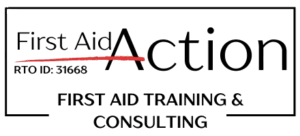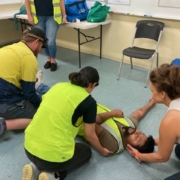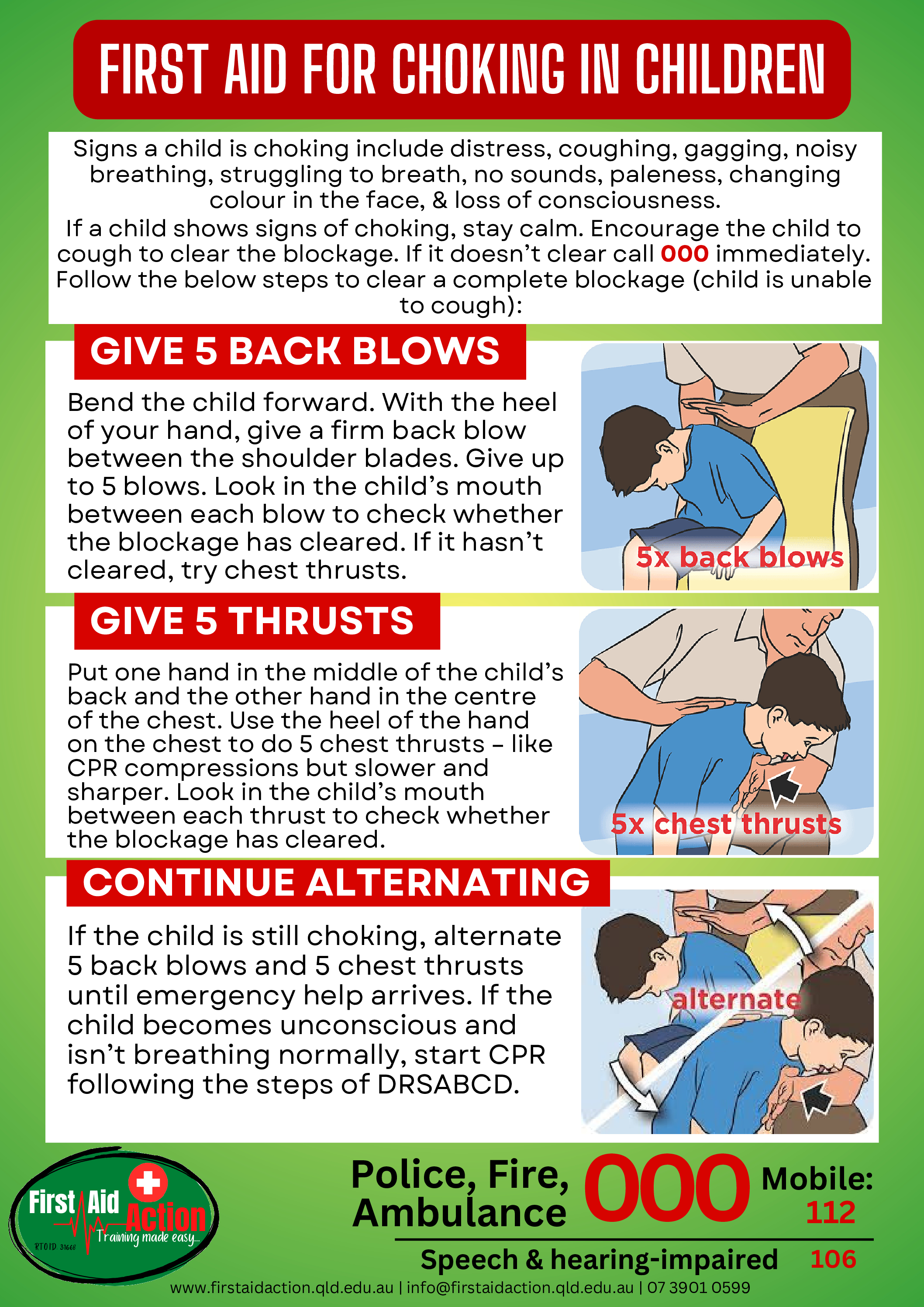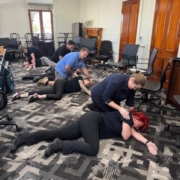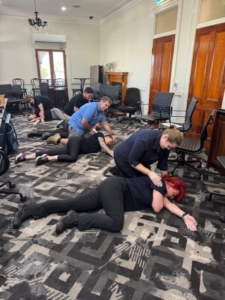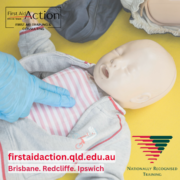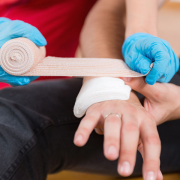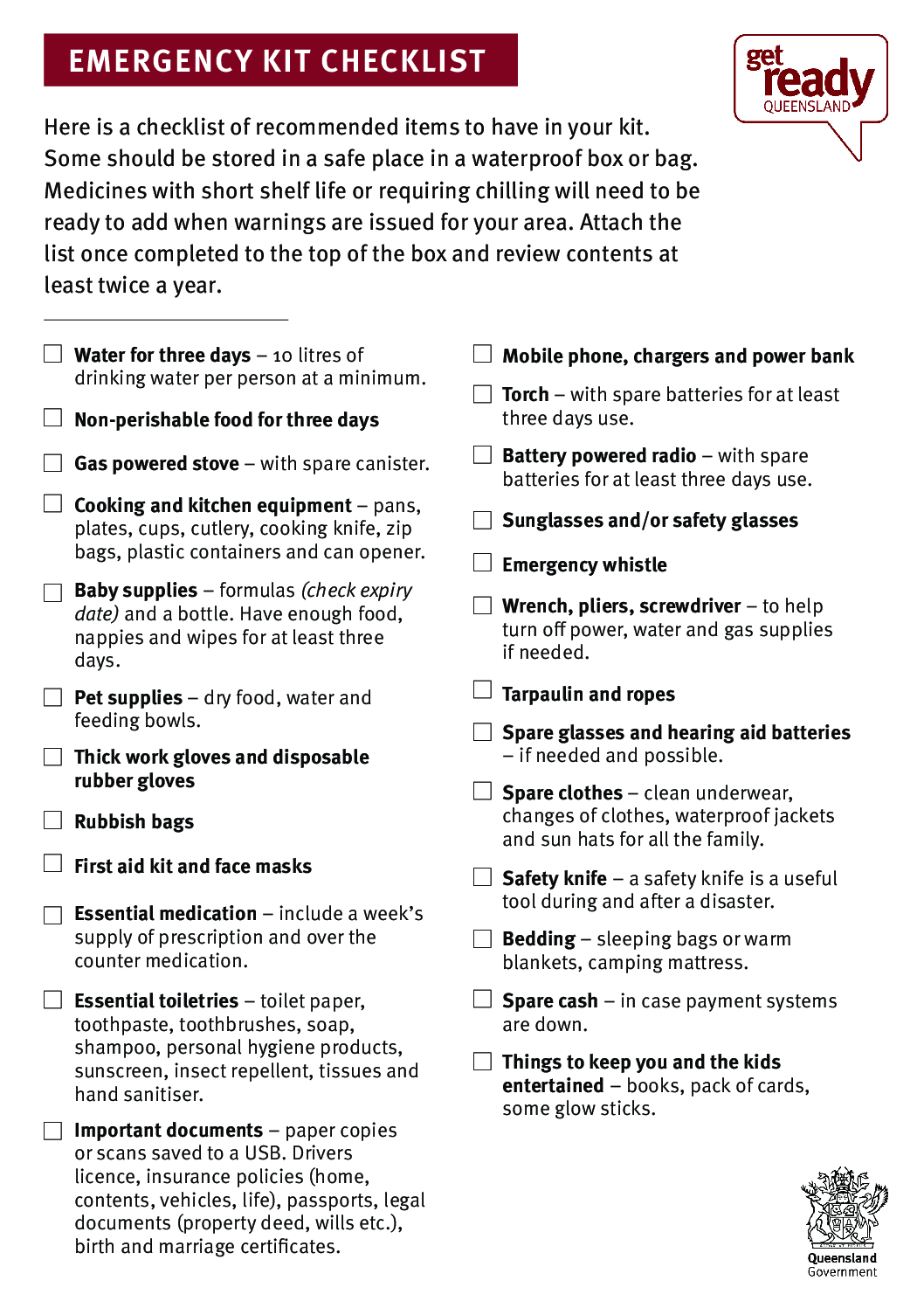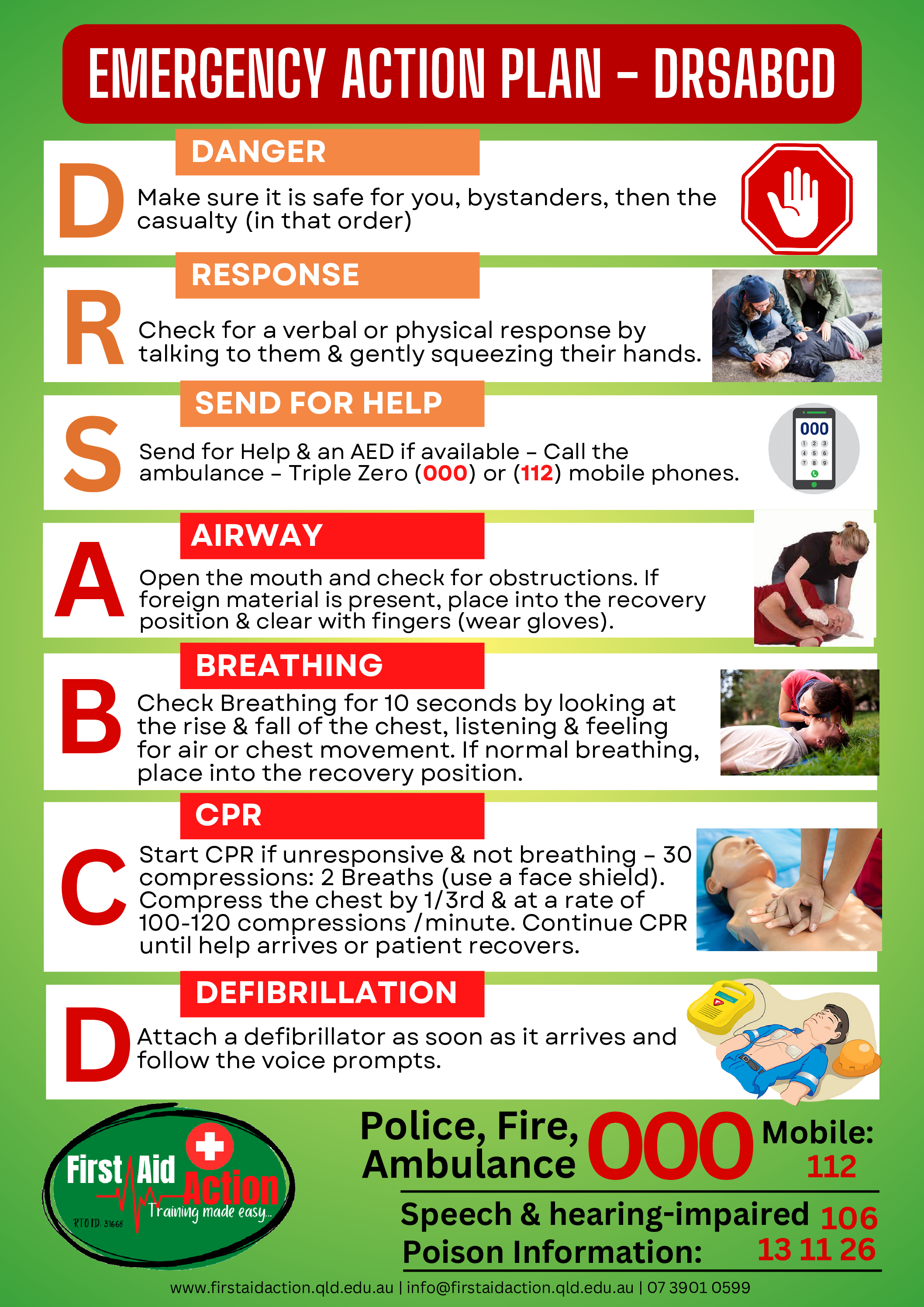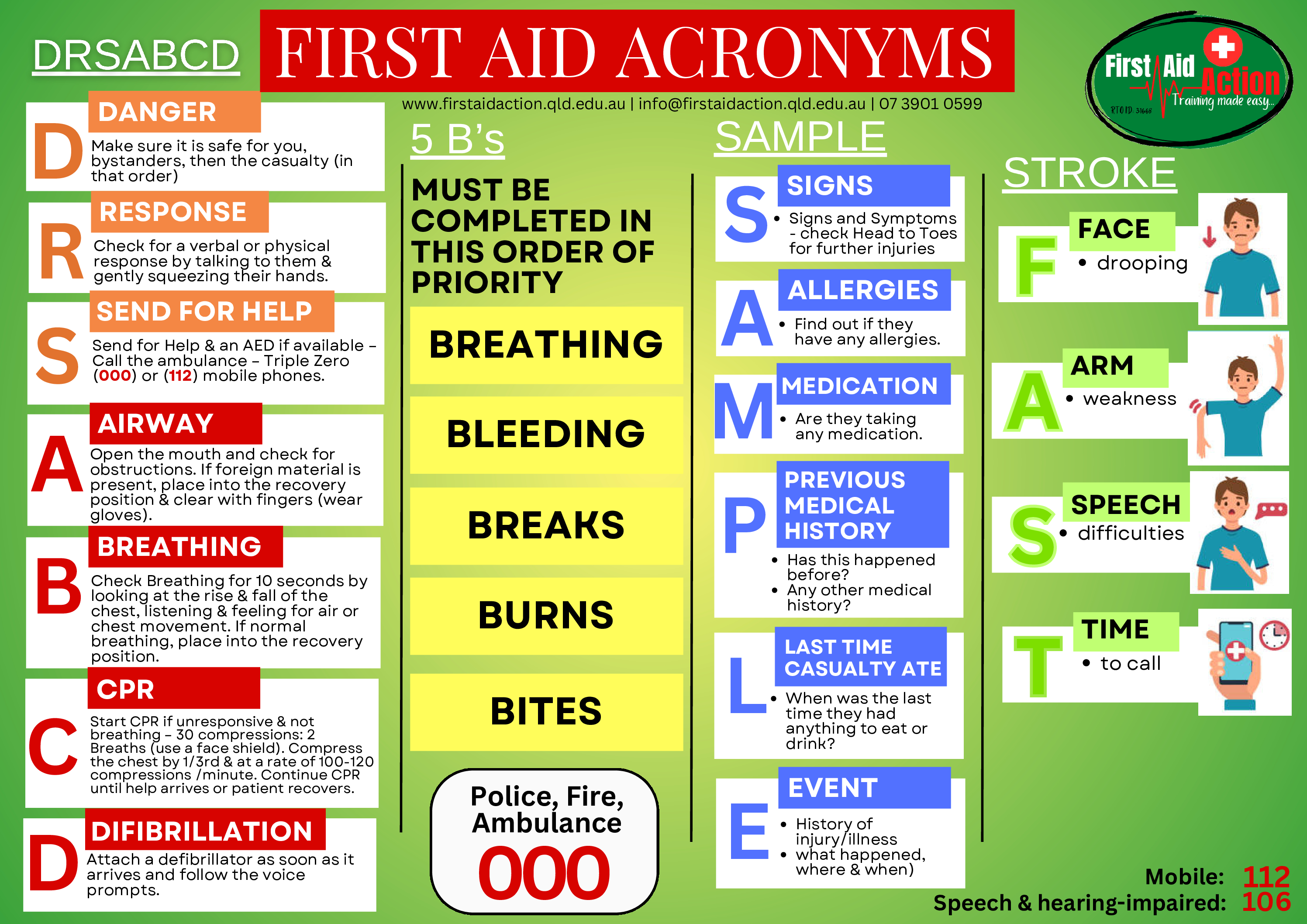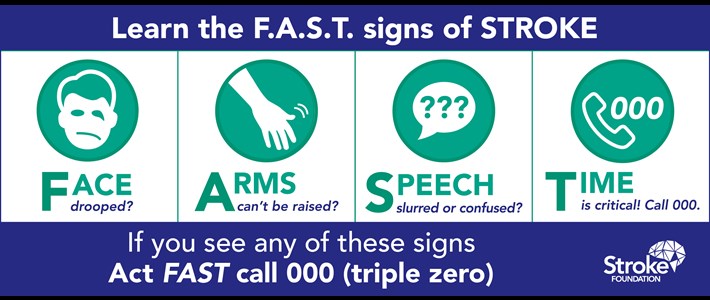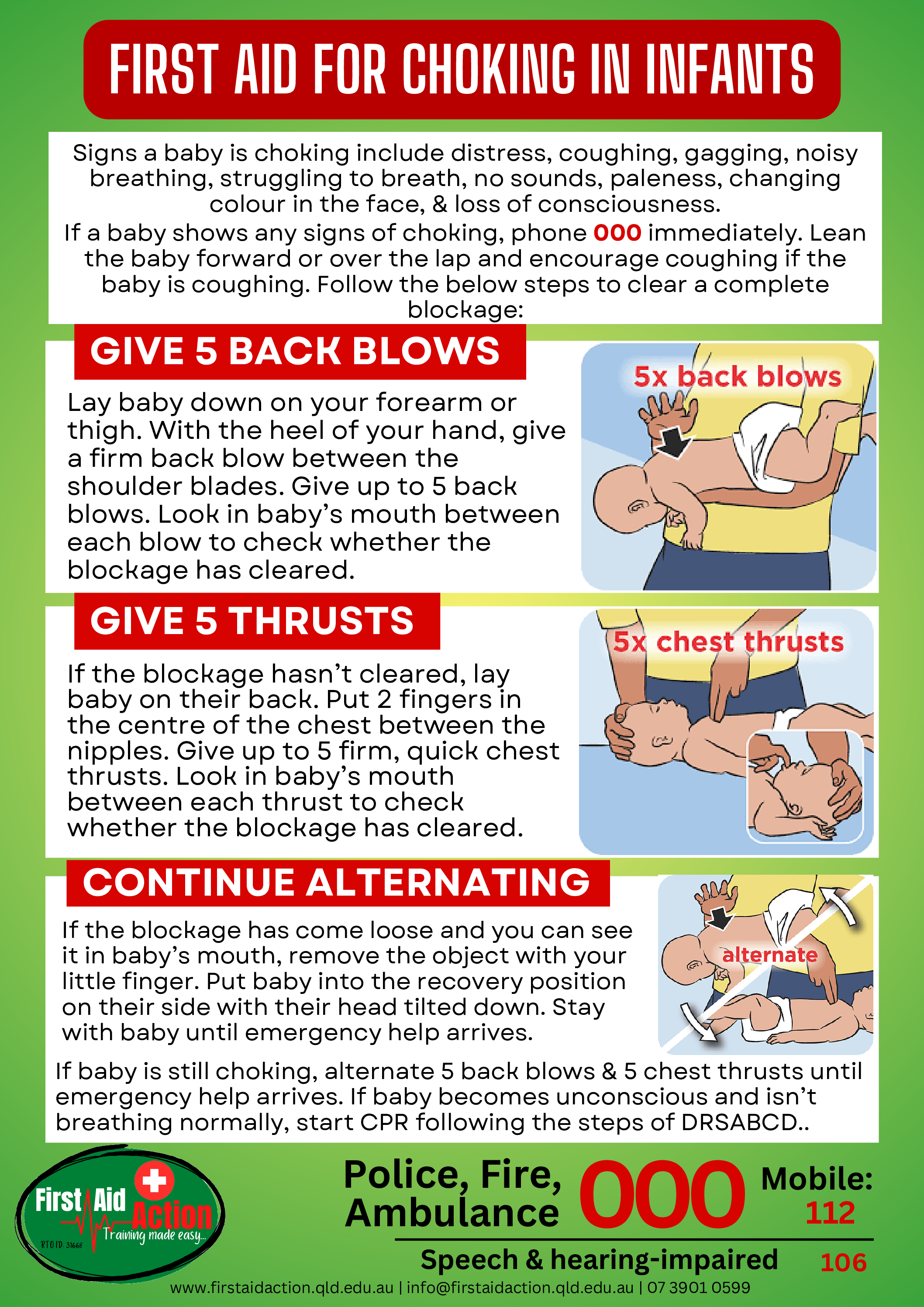What is a Log Roll?
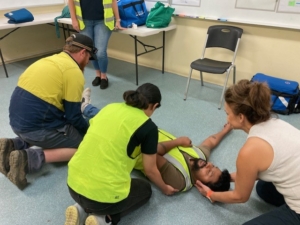 Luella demonstrating a Log Roll.
Luella demonstrating a Log Roll.
A log roll or also known as a spinal roll, is when you are needing to place a casualty with a back injury onto their side very carefully. The main reasons why you would need to do this is to protect the airway & breathing if the casualty is unconscious, or the casualty is needing to vomit or there is severe bleeding to stop on their back to access the wound. If the casualty is conscious and able to breathe then it is best to hold their head and not move them (unless danger is present) so that unnecessary movement may cause further injury to the neck and spine. Leaving an unconscious casualty too long on their back can increase the risk of choking on their tongue relaxing onto the airway and bodily fluids. The Australian Resuscitation council guidelines state that the protection of a person’s airway and breathing is priority.
The person at the head always takes control of the roll with at least two other people on one side and roll the person together keeping the neck and spine in alignment. It is always best to learn this important technique under instruction from a trained professional in a first aid course so you have the confidence to perform this skill at home or in the workplace.
Contact First Aid Action RTO 31668 for further information: 07 3901 0599 or email us at info@firstaidaction.com.au
